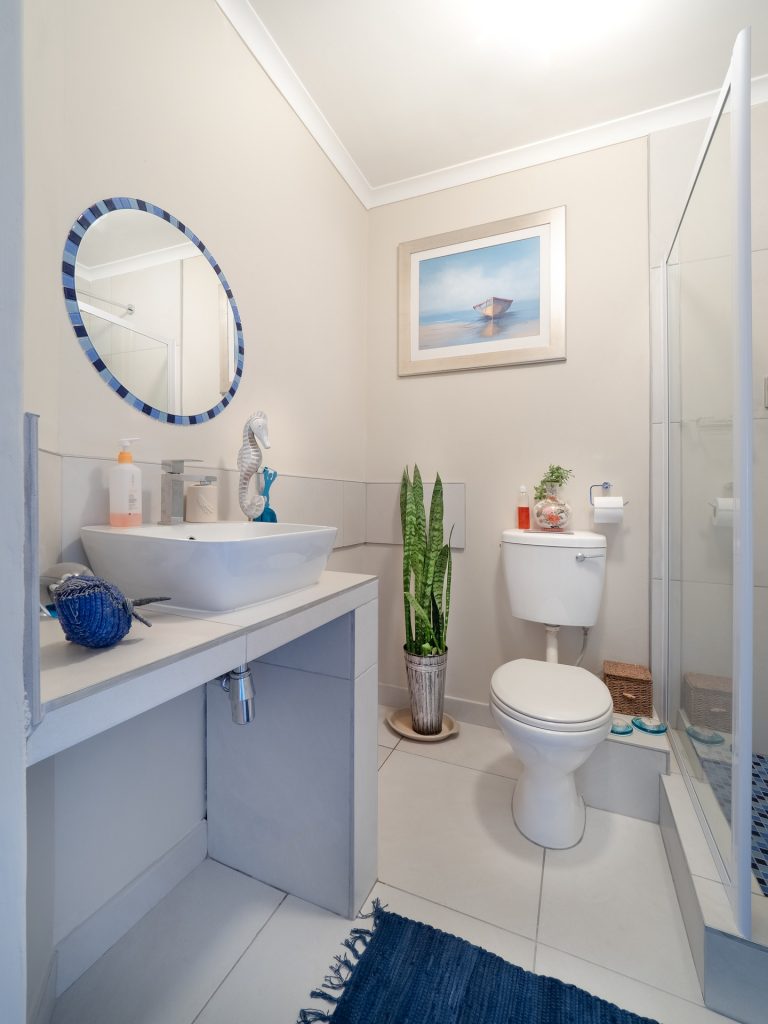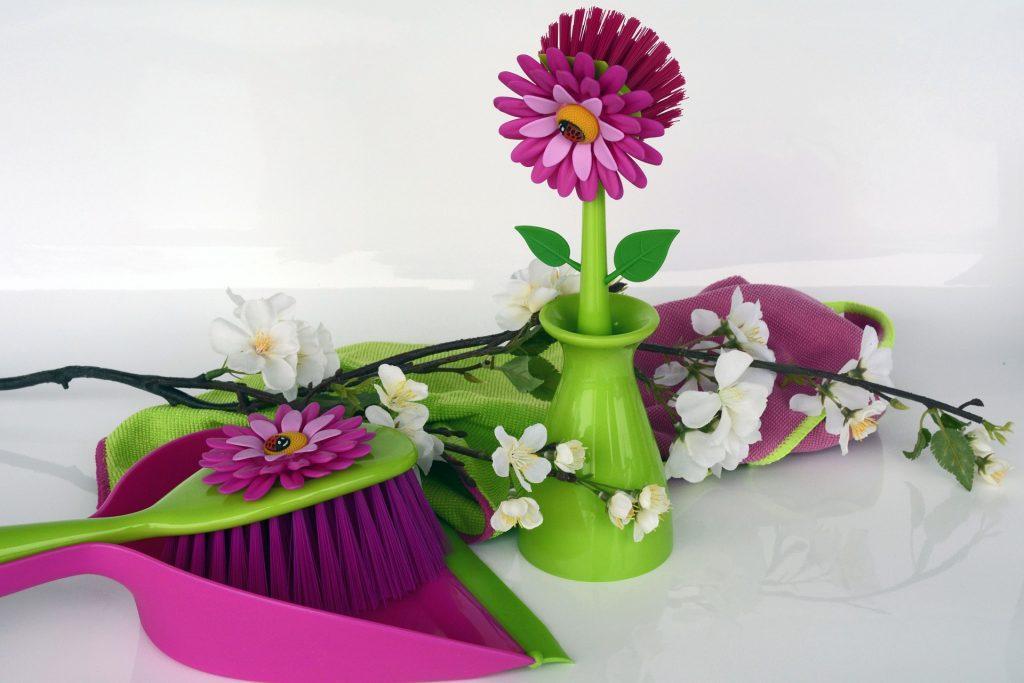
Mold growth can occur in any home, at any time, and drastically affect indoor air quality. It’s a bit puzzling why society hasn’t focused more on creating better mold awareness, which is why it’s up to us to form a community of knowledgeable individuals who are dedicated to creating safe indoor environments so that we can keep our families healthy.
To do this, we need to understand what mold is, how to identify it if it’s in our homes, and what steps to take to remove it properly so it doesn’t continue to affect our health. Most importantly, though, knowing what steps to take to prevent mold growth in the first place can not only keep our indoor air quality clean, it can help save money down the road by avoiding costly remediation projects.
How Mold Finds Its Way Into Homes
Mold is a key part of the natural environment, but it can wreak havoc on indoor air quality and health when it manages to grow inside a home. Unfortunately, it’s incredibly easy to accomplish.
Mold reproduces by creating microscopic spores that it releases into the air. With over 100,000 species of mold identified so far, it’s safe to say that these mold spores are everywhere- in our cars, on our clothes, and even inside our homes. All of which isn’t a problem! Encountering a few mold spores throughout the day is absolutely okay and unavoidable.
The health implications of mold exposure begin when this fungus manages to start growing inside of a home. Indoor spaces are perfect locations for mold growth. They contain oxygen, they’re temperature-controlled, and there are a plethora of food sources available. The missing piece that a mold spore needs to begin colonizing an area is moisture. If a mold spore stumbles on an area in a home that’s wet or slightly damp for 24–48 hours, it will start to grow. These wet opportunities don’t have to be massive water events like flooding from a hurricane or a hole in the roof. Leaving a window open during a rainstorm, high indoor humidity creating condensation, a hidden leak in the attic, or a spill on the carpet that wasn’t cleaned up properly can all lead to mold growth as well.
It’s important to note that while we’ve all heard of “toxic black mold,” any mold has the opportunity to affect our health. Once that mold begins to colonize an area, it releases more and more spores into the air that are then trapped in that space. That decreases the air quality and increases the number of spores you and your family are breathing in and being exposed to every time you’re in your home. This triggers an immune response to fight off the foreign invaders, which can spark a long list of symptoms ranging from mild to irritating. Some people in the home may not experience any symptoms at all, but those with compromised or developing immune systems (like children) are far more likely to feel the effects of exposure. It all depends on the individual.
These health impacts are why it’s important to know what to look for so you and your family remain safe and healthy.
Checking For Mold
The best way to check for mold is to hire an inspector to come in and assess the indoor environment. This person should:
-
Take a look at the whole house
-
Spend a few hours assessing the area
-
Utilize multiple testing methods
-
Check for other contaminants like bacteria and mycotoxins
Some species of mold can produce microscopic toxins called mycotoxins, which they release into the air and can trigger adverse health reactions as well. Bacteria can be present depending on the source of the water event that led to mold growth and can also cause those in the home to feel unwell. All of this data will give you a crystal clear picture of what’s going on inside your home.
Depending on the situation, not everyone is in a position to hire a mold inspector. That’s okay! The main aspect of mold awareness is to do what you can when you can. In the meantime, take a look at moldy hotspots, which include attics, basements, and crawl spaces. These areas are often places we don’t frequent, which can lead to hidden mold. Relying on your nose is also incredibly important. Oftentimes, mold colonies create a musty, earthy, stale smell. If there’s hidden mold inside of a wall, this could be the first indication of a problem.
One of my favorite tricks to check for mold actually only takes 30 seconds and a trip to the bathroom.
If you lift the toilet tank lid and see mold on the lid or inside the tank, it’s a good indication that there’s mold growth elsewhere in the home. The lid itself is tight, but not completely sealed, which means there is some airflow. A rouge spore could have found its way in there, but it’s much more likely that there are enough spores in the air thanks to the colonized mold that they opportunistically found this wet location and began growing.
Finally, pay attention to your health! This can be a great indicator of a problem, and one we don’t often consider. If you or another family member is constantly feeling under the weather and the doctor can’t seem to pinpoint why, it could be an environmental factor triggering the bodily response. Find a doctor who can run a few tests to see if mold or mycotoxins are the sources of the problem. If so, there’s probably mold in the home that needs to go!
Removing Mold
Sometimes, the area is small enough that you can handle it yourself. You’ll need to be careful in situations like these by making sure the source that led to the mold is fixed, ensuring the mold hasn’t gone farther into the space (like into a wall), and that it’s the only moldy problem existing in the home. Often, when there’s one issue, there are others as well.
When you tackle mold removal, bleach is NOT the answer! You don’t just want to kill the mold, you have to remove it by the root, like a weed. Otherwise, it will come right back. For this process, you’ll need protective gear, an EPA-approved cleaning product that will kill and remove the mold from the surface, and a microfiber towel. These towels are 100 times more effective at wiping away particles than a regular cloth. Once you’re armed with your gear, clean and wipe the surface at least three times. You never know if mycotoxins or bacteria are also present, so this will ensure those contaminants are effectively removed from the surface.
If you find mold in your home, there are two options.
Remember, those mold spores are also probably in other areas of the room or home, so make sure to thoroughly clean every surface a few times over the next few weeks to remove the contamination.
If the mold problem you found is too large to tackle yourself, call a mold inspector and remediation company ASAP. The mold inspector will give the remediation company the map they need to handle the moldy issue. With this information in hand, the company should tick these three boxes for successful remediation:
-
Remediate the mold properly
-
Fix the source that led to the mold in the first place
-
Remove all of the contamination
The important part of mold removal is to make sure that you and your family aren’t continuing to be exposed to these harmful particles. When in doubt, call an expert and pepper them with questions.
Preventing Mold and Improving Air Quality
The best action is preventative action! Indoor air quality is crucial for our well-being, so it’s important that we add it to our list of steps to take for living a healthy life.
There are a huge number of things we can do to improve indoor air quality and discourage mold growth, but these are the best ones to start with:
-
Cleaning and deep cleaning frequently
-
Clean and dry out appliances that deal with water (think coffee pot, dishwasher, and fridge)
-
Invest in an air purifier (consider a whole-home purifier)
-
Regularly check those hidden moldy hotspots
-
Keep the indoor humidity low (between 30-50 percent)
-
Install moisture counter-measures in the basement
-
Take care of any water events immediately, such as leaks and spills
-
Make sure the ventilation in the bathroom and kitchen is operating correctly
-
Turn on the exhaust fan and crack a door while showering
-
Maintain the HVAC system and change the air filters on time
Some steps you can add to your daily routine, some to your regular home maintenance, and others you can include when you’re able. It’s also a good idea to have action plans in place just in case mold manages to sneak in and start growing in your home or you experience an unexpected water event. The main goal is to create clean air, but you don’t have to tick every box at once or place your home in a bubble! Remember, mold awareness is doing what you can when you can.
A Healthier, Happier Home
Indoor air quality hasn’t gotten the spotlight it deserves, but that doesn’t make it any less important. We take on average 20,000 breaths a day and considering that we take most of those breaths right inside our own homes, we need to make sure that the air isn’t filled with harmful particles.
This movement towards better indoor environments starts with awareness. When our indoor spaces are healthy, we can continue to live happy lives.
____________________________________________________________
MICHAEL RUBINO is an air quality expert who helps bridge the gap between the air in our homes and its direct impact on our health. Rubino works with over 100 doctors globally to not only raise awareness but also provide solutions to correctly identify and remove the pollutants causing this global health crisis. As President of All American Restoration, Rubino specializes in working with people who are immunocompromised or have acute and sustained reactions to mold exposure and has helped heal over 1,000 families—including celebrities and athletes. He is also a council-certified Mold Remediator by IICRC and ACAC and is a contributing member, sponsor, and speaker for the Indoor Air Quality Association. He is the author of The Mold Medic and a contributor to MindBodyGreen. Rubino has been featured on Gwyneth Paltrow’s The goop Podcast and goop’s website, Brandi Glanville’s Unfiltered podcast, Luke Storey, Forbes, USA Today, and Bloom TV, to name a few. He hosts the YouTube series, Mold Talks, where guests include medical experts as well as mold recovery patients, including media icon Atoosa Rubenstein.





















